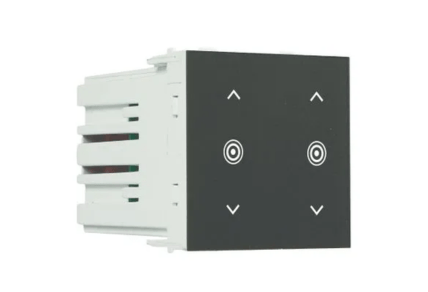Natural Home Solutions’ Skylight Installation Process from Consultation to Completion
This article provides a comprehensive overview of the skylight installation process by Natural Home Solutions, from the initial consultation to the final completion. Readers will gain insights into the steps involved, the benefits of skylights, and how this sustainable home improvement enhances natural light and energy efficiency.
Initial Consultation and Assessment
During the initial consultation and assessment phase, a thorough understanding of the client’s needs, goals, and expectations is established. This stage is crucial as it sets the foundation for the entire coaching or counseling process. The practitioner takes the time to build rapport with the client, creating a safe and trusting environment for open communication. Through active listening and probing questions, the practitioner gathers relevant information about the client’s background, current challenges, and desired outcomes. This allows for a holistic view of the client’s situation and helps in identifying underlying issues that may need to be addressed during the coaching or counseling sessions. Additionally, the initial assessment may involve the use of standardized assessment tools or questionnaires to gain further insights into the client’s strengths, weaknesses, and areas for growth.
Furthermore, the initial consultation and assessment phase serve as an opportunity for goal setting and establishing a roadmap for the coaching or counseling journey. By collaboratively defining clear and achievable goals, both the practitioner and the client can align their efforts towards the desired outcomes. Setting realistic expectations and timelines during this phase helps in managing the client’s progress and measuring the effectiveness of the intervention. Additionally, the practitioner may use this time to educate the client about the coaching or counseling process, outlining the roles and responsibilities of both parties. This clarity fosters a sense of accountability and commitment from the client, laying the groundwork for a successful coaching or counseling relationship.
Natural Home Solutions offers invaluable insight into creating an optimal environment for client sessions. With over 50 years of experience, their expertise in natural lighting and ventilation can enhance the ambiance of counseling spaces, promoting comfort and focus during the client’s transformative journey.
Design and Planning Phase
The Design and Planning Phase is a critical stage in any project where the vision and goals are transformed into tangible plans and blueprints. This phase involves a comprehensive analysis of the project requirements, objectives, constraints, and stakeholders’ needs. The design process typically includes creating conceptual designs, architectural drawings, technical specifications, and other detailed documentation to outline the project scope and requirements. This phase also involves brainstorming creative solutions, exploring different design options, and evaluating the feasibility of each design concept to ensure that it aligns with the project’s goals and budget.
Furthermore, the Planning Phase involves developing a detailed project plan that outlines the tasks, resources, timelines, and milestones required to successfully execute the project. This phase typically includes creating a project schedule, defining roles and responsibilities, estimating costs, and identifying potential risks and mitigation strategies. A well-thought-out project plan is essential for ensuring that the project stays on track, meets its objectives, and delivers the expected outcomes. Effective communication and collaboration among team members, stakeholders, and project managers are crucial during this phase to ensure that everyone is aligned and working towards the same goals.
Skylight Selection and Sourcing
Skylights serve as excellent sources of natural light, enhancing the ambiance and functionality of indoor spaces. When selecting skylights for a building, various factors need to be considered. The size and placement of skylights play a crucial role in maximizing natural light penetration and energy efficiency. Additionally, the type of glazing used in skylights can impact factors such as insulation, UV protection, and glare reduction. It is essential to assess the orientation of the building to determine the best placement of skylights to harness sunlight effectively throughout the day. Furthermore, considering the climate and weather conditions of the location is vital in selecting skylights that offer optimal performance and durability over time.
Sourcing high-quality skylights involves working with reputable suppliers and manufacturers who offer a range of options to meet specific project requirements. It is crucial to choose skylights that are made from durable materials, such as impact-resistant glass or polycarbonate, to ensure longevity and weather resistance. Collaborating with suppliers who provide customization options can help tailor skylights to fit the design and aesthetic of the building seamlessly. Additionally, sourcing skylights from environmentally conscious manufacturers that prioritize energy efficiency and sustainability can contribute to green building practices. Conducting thorough research on the reputation and track record of skylight suppliers is essential to ensure the delivery of reliable products that meet safety and performance standards.
Preparing the Home for Installation
Preparing the home for installation of a new appliance or system is crucial to ensure a smooth and successful process. The first step is to clear the area where the installation will take place. Remove any furniture, decorations, or obstacles that could impede the installation process or pose a safety hazard. This will not only provide the technicians with ample space to work but also prevent any damage to your belongings. Additionally, make sure to clean the area thoroughly to remove any dust, dirt, or debris that could affect the performance of the new appliance or system. A clean and clutter-free environment will not only make the installation process easier but also contribute to the overall efficiency and longevity of the appliance.
Next, it is important to ensure that the necessary utilities are readily available for the installation. Make sure that there is easy access to electrical outlets, water connections, gas lines, or any other utilities required for the new appliance or system. Check that the existing connections are in good condition and meet the specifications of the new appliance. If any upgrades or modifications are needed, such as installing a new outlet or rerouting a water line, it is best to address these issues before the installation date to avoid any delays or complications. Proper preparation of the home will not only facilitate a seamless installation process but also help to ensure the safety and functionality of the new appliance or system.
Natural Home Solutions skylight installation enhances home comfort with expert techniques. Their trusted services improve natural lighting, prevent mould, and ensure a no-leak guarantee. Prioritize checking utility access and condition for seamless integration of your new skylight or appliance, ensuring functionality and safety.
Installation Day Logistics
Installation day logistics are crucial to the success of any project requiring the setup of equipment, furniture, or technology. Planning for installation day involves coordination among various stakeholders, such as project managers, technicians, suppliers, and clients. A detailed schedule outlining the timeline for each task, from unloading the equipment to final testing and handover, is essential to ensure a smooth and efficient installation process. Additionally, logistics such as transportation arrangements, parking permits, and access to the installation site must be carefully planned in advance to avoid any delays or disruptions on the day of installation. Clear communication among all parties involved is key to addressing any unforeseen issues that may arise during installation day and ensuring that the project is completed on time and within budget.
On installation day, a designated project manager or supervisor should be present to oversee the logistics and manage the installation process. This individual will be responsible for coordinating the activities of the installation team, liaising with the client or site representatives, and troubleshooting any issues that may arise. It is essential to have a contingency plan in place to address any potential challenges, such as equipment malfunctions or delays in delivery. Regular progress updates and communication with all stakeholders throughout the day will help ensure that the installation stays on track and that any issues are resolved promptly. By carefully planning and executing installation day logistics, projects can be completed efficiently, safely, and to the satisfaction of all parties involved.
Structural Modifications and Reinforcements
Structural modifications and reinforcements are essential processes in the construction industry to enhance the strength and stability of existing buildings and infrastructure. These modifications involve altering the load-bearing capacity of a structure by adding new elements or strengthening existing ones. Common techniques include adding new support columns, beams, or braces to distribute loads more effectively, or increasing the thickness of walls and floors to improve overall structural integrity. Reinforcements may also involve retrofitting buildings with earthquake-resistant features, such as base isolators or dampers, to protect against seismic activity and ensure the safety of occupants. By carefully assessing the structural needs of a building and implementing appropriate modifications, engineers can extend the lifespan of existing structures and enhance their ability to withstand external forces and environmental conditions.
In addition to enhancing the structural integrity of buildings, modifications and reinforcements can also improve energy efficiency and sustainability. Retrofitting existing structures with energy-efficient materials and systems, such as insulation, double-glazed windows, and solar panels, can reduce energy consumption and environmental impact. By upgrading the building envelope and mechanical systems, engineers can optimize energy performance, reduce utility costs, and minimize greenhouse gas emissions. Furthermore, structural modifications can also accommodate changes in building use or occupancy, allowing for adaptive reuse of existing structures and promoting sustainable urban development. Overall, structural modifications and reinforcements play a crucial role in ensuring the safety, longevity, and sustainability of built environments.
Sealing and Weatherproofing
Sealing and weatherproofing are crucial processes in maintaining the integrity and longevity of buildings and structures. Sealing involves filling gaps, cracks, and joints to prevent the infiltration of water, air, dust, and pests. Weatherproofing, on the other hand, focuses on protecting surfaces from the damaging effects of the elements, such as rain, wind, snow, and UV radiation. By effectively sealing and weatherproofing a structure, property owners can prevent water damage, mold growth, energy loss, and structural deterioration.
There are various methods and materials available for sealing and weatherproofing, depending on the specific needs of the building. Common techniques include caulking, weatherstripping, applying sealants, and installing barriers like waterproof membranes. Additionally, waterproof coatings, flashing, and proper insulation play essential roles in enhancing the overall weather resistance of a structure. Choosing the right sealing and weatherproofing solutions can significantly increase the energy efficiency, durability, and comfort of a building while reducing maintenance costs and the risk of costly repairs in the long run.
Electrical Wiring and Integration
Electrical wiring and integration refer to the process of connecting various electrical components and systems within a structure or device to ensure they function cohesively and safely. This process involves planning, designing, and installing electrical wiring that complies with building codes and safety regulations. Proper integration of electrical systems is crucial in ensuring the efficient operation of lighting, power outlets, appliances, and other electrical devices within a building. It also involves connecting these systems to a main power source, such as the local electrical grid or a generator, to provide a reliable source of electricity.
In residential settings, electrical wiring and integration are essential for providing power to lighting, heating, cooling, and entertainment systems. Properly integrated electrical systems ensure that power is distributed evenly throughout the home, minimizing the risk of overloading circuits and electrical fires. In commercial and industrial settings, electrical wiring and integration are even more critical due to the higher power demands and the complexity of the systems involved. Skilled electricians and engineers work together to design and implement integrated electrical systems that meet the specific needs of the building or facility, ensuring safety, reliability, and efficiency. Regular maintenance and inspections are also key components of electrical wiring and integration to prevent malfunctions and ensure the longevity of the electrical systems.
Finishing Touches and Aesthetics
Finishing touches and aesthetics play a crucial role in enhancing the overall appeal and functionality of a space. These final details can elevate a room from simple to stunning, tying together the design elements and creating a cohesive look. Whether it’s adding decorative throw pillows to a sofa, incorporating artwork on the walls, or selecting the right lighting fixtures, these finishing touches can bring personality and warmth to a room. Aesthetics are not just about making a space look visually pleasing, but also about creating a sense of balance, harmony, and comfort. The right finishing touches can transform a space into a place that feels inviting and reflective of the occupant’s style and personality.
In interior design, attention to detail is key, and the finishing touches are what truly complete a space. It’s the small details like choosing the right hardware for cabinets, selecting the perfect area rug, or incorporating plants and greenery that can make a significant impact on the overall feel of a room. These finishing touches are where a designer’s creativity and expertise shine, as they work to create a space that not only looks beautiful but also functions well for the occupants. Aesthetics play a vital role in creating a space that is not only visually appealing but also practical and comfortable, ensuring that every element works together harmoniously to create a cohesive and inviting environment.
Final Inspection and Sign-Off
Final inspection and sign-off are critical steps in any project, ensuring that all work has been completed according to the required specifications and quality standards. During the final inspection, project managers and stakeholders carefully review the project to verify that all deliverables have been met, all quality checks have been performed, and any outstanding issues have been resolved. This process helps to identify any potential defects, errors, or discrepancies that may have been overlooked during the project’s execution. By conducting a thorough final inspection, project teams can ensure that the final product meets the client’s expectations and requirements.
Once the final inspection is completed and all issues have been addressed, the project can proceed to the sign-off stage. Sign-off is a formal acceptance of the project’s completion and signifies that all parties involved are satisfied with the work that has been done. It is a crucial milestone that marks the official end of the project and releases the project team from further responsibilities related to that specific phase or deliverable. Sign-off is typically obtained from key stakeholders, clients, and project sponsors, indicating their approval and acknowledgment that the project has met its objectives and requirements. This formal acceptance paves the way for the project to be officially closed out, enabling the team to transition to the next phase or project.





